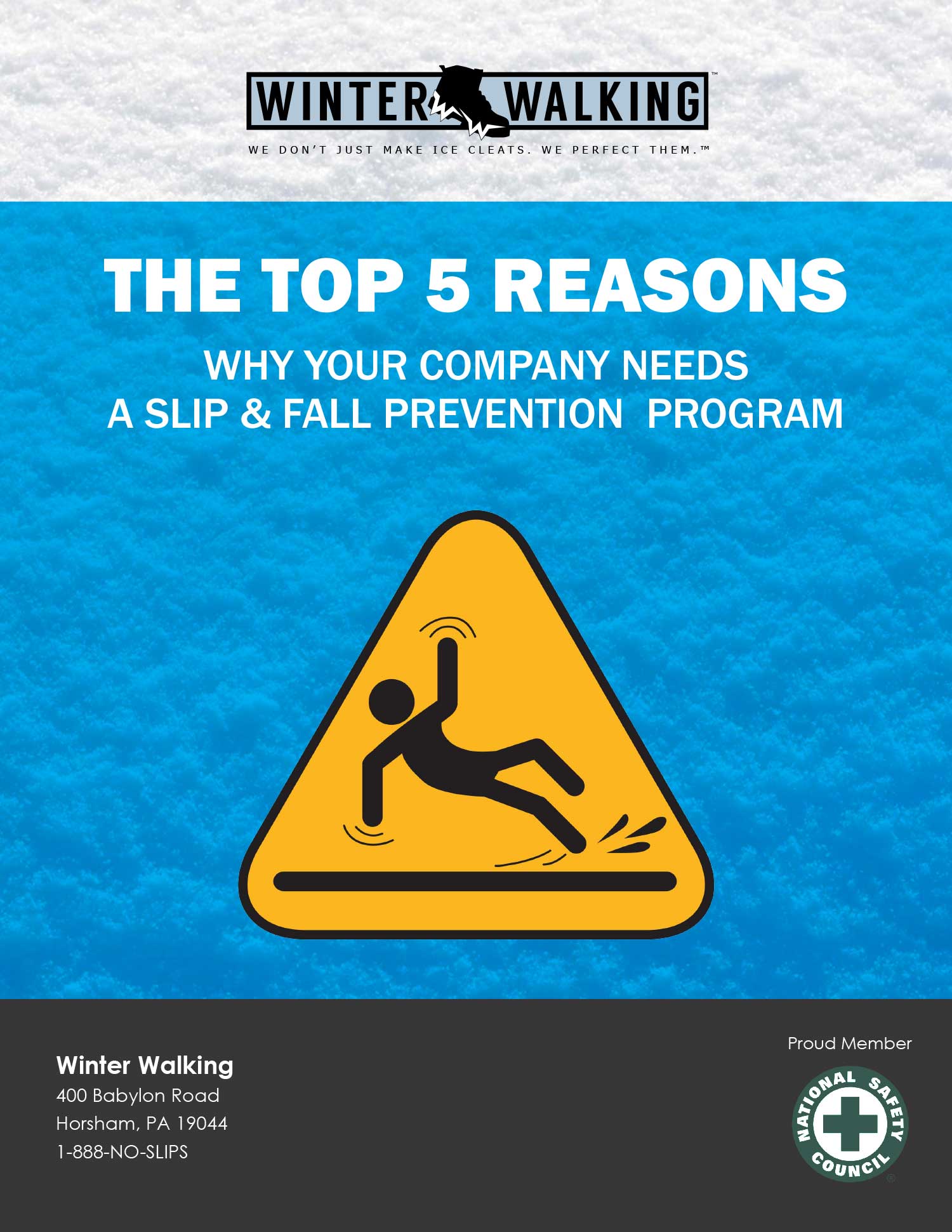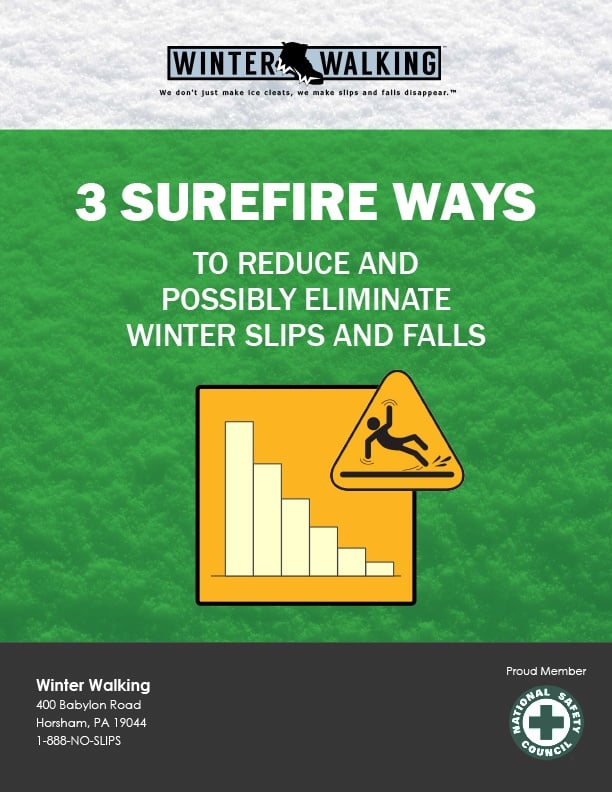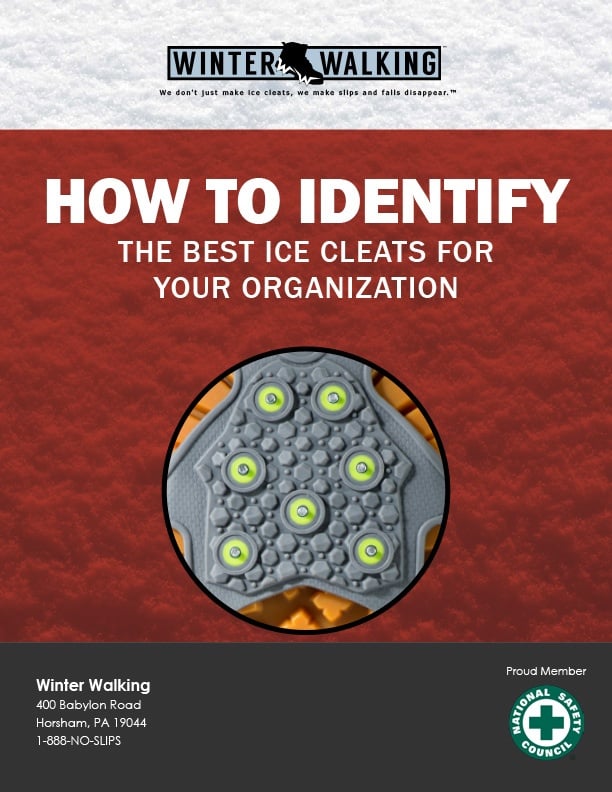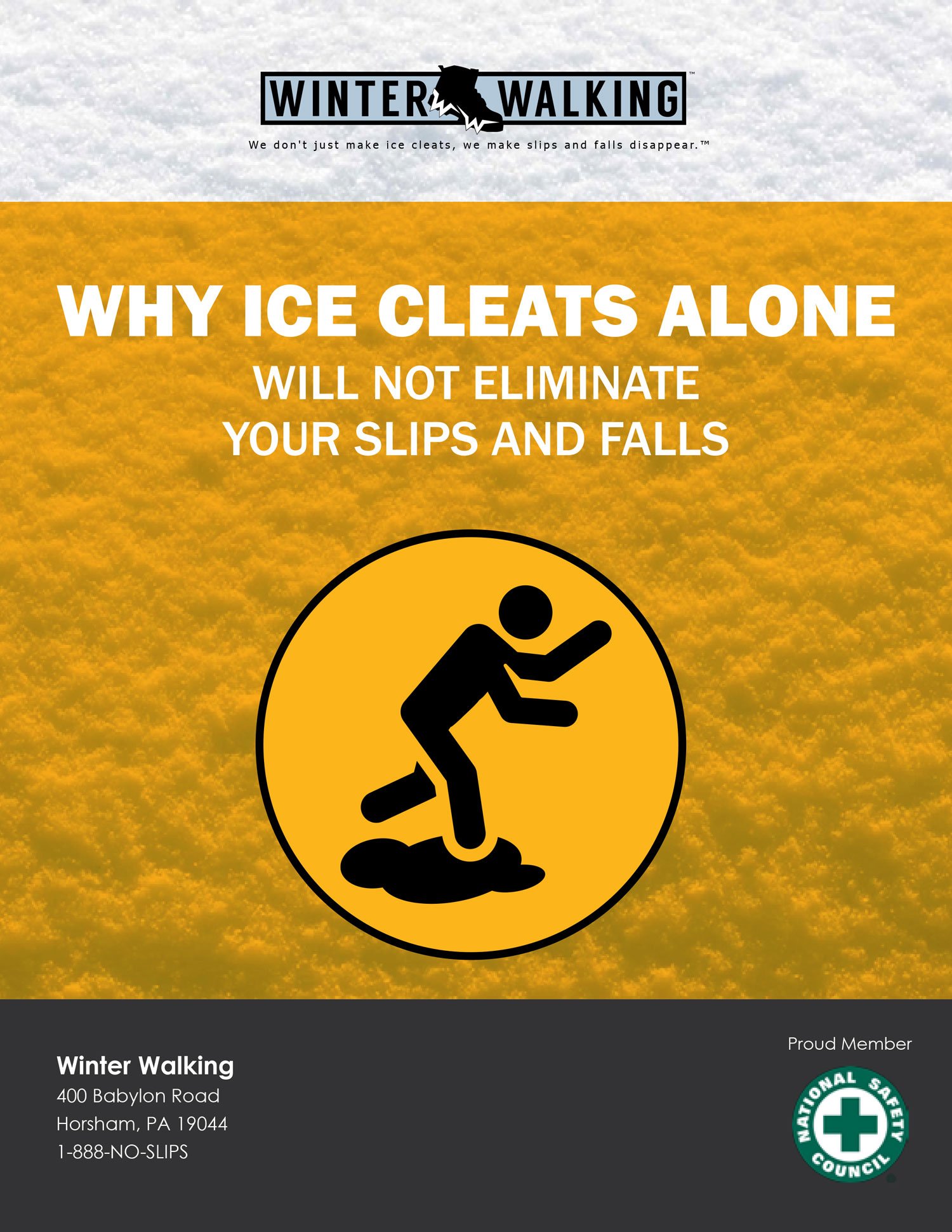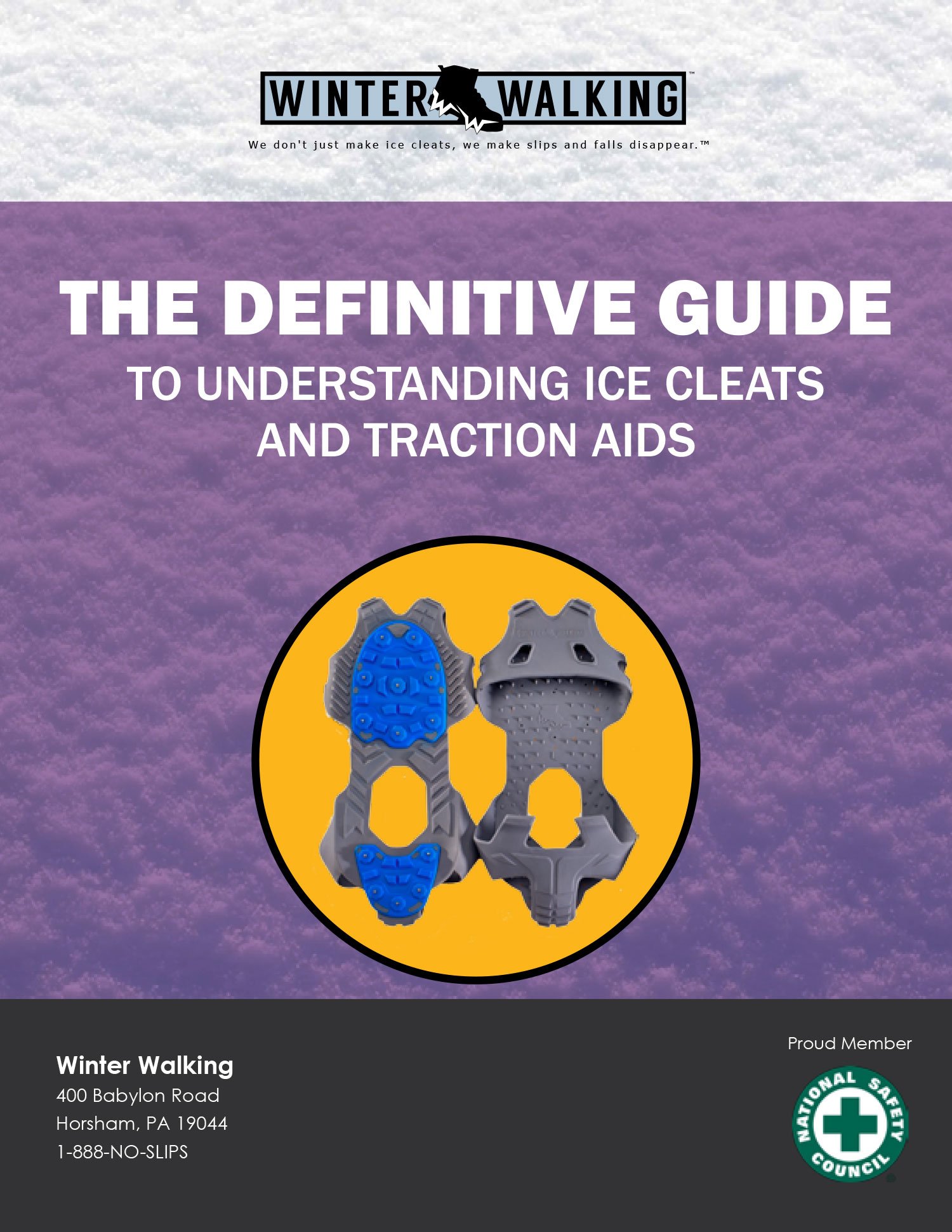The calendar says it's September and I’m sure the last thing on your mind is winter slips and falls on ice and snow, right? But I wanted to share a quick story with you about one of the largest employers in the country.
I’ve spoken with them for several years now trying to help them reduce their winter slip and fall incidents. As time passed, this company realized a critical flaw in their decision-making process –– they only had a concern for winter slips and falls during the winter months. They were always “reacting” and, therefore, never got the accident reduction they needed.
If you only think about how to prevent winter slip and fall incidents after they happen, it’s always going to be too late.
Unfortunately, this company is not alone. Too many companies operate with this reactive approach to safety instead of a substantially less costly proactive approach.
Giving yourself proper time to learn about the differences between anti-slip cleats and other winter spikes and their manufacturers will help you make the best decision for your company.
Without having this critical knowledge, however, you will waste both time and budget buying something that will not work well for your workforce. Gathering information using a quick online search does not take into account the people that will be using this traction aid on a regular basis. And that’s the key to the failure part of the equation. It’s not enough to consider cost alone. First, put yourself in your employees’ shoes (pun intended). And remember that buying your employees ice walkers is first and foremost about them.
Here’s another way of thinking about this. When you’re shopping in department stores for clothing, they always seem to be a season ahead. Why? To give you time to compare your options and choose exactly what you need. Only here, we’re talking about your employees’ safety and your company’s safety record. And not being prepared before winter hits is the same as planning to fail.
Thank you for reading. If you found value in this post, please share it with your LinkedIn network or simply “like” it.
Bill Coyne is the VP of Sales for Winter Walking. He has been helping organizations across a wide variety of business sectors eliminate workplace slips and falls in ice and snow for over 16 years. Email bill@winterwalking.com or visit www.winterwalking.com for additional helpful information and resources.


